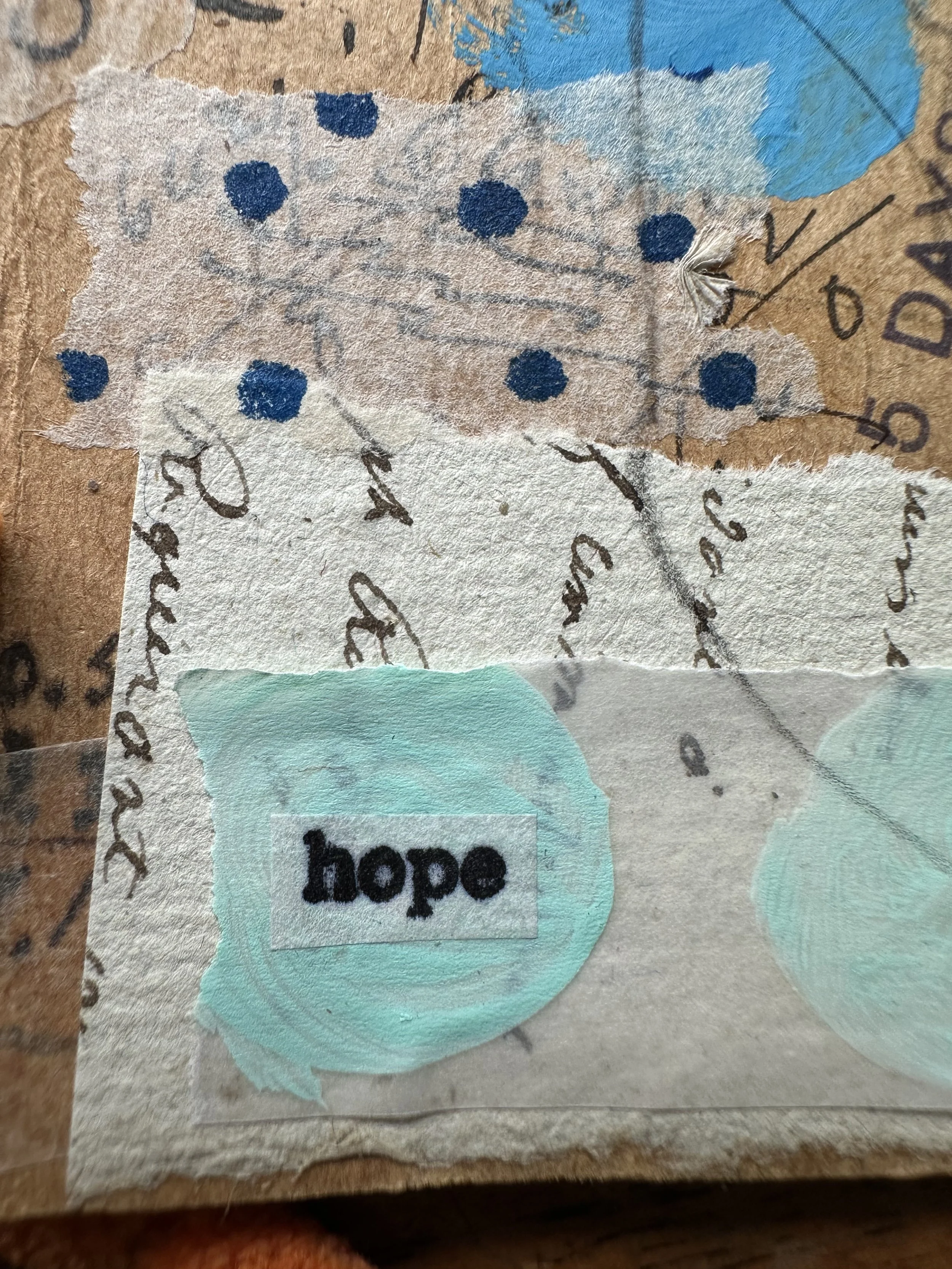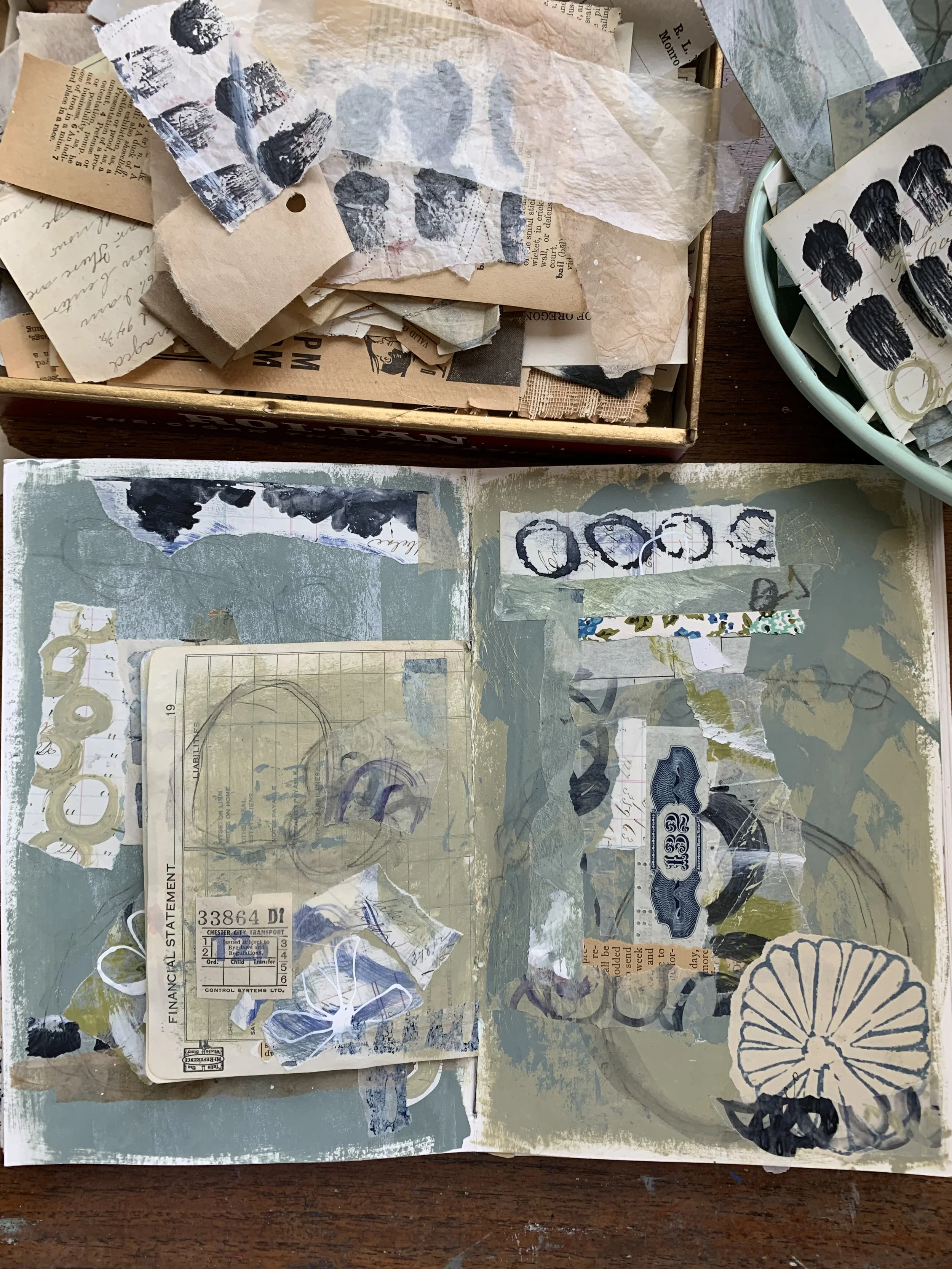Layers & Textures
Torn, Stitched, and Layered
Vintage art journaling is a sensory experience—one that invites you to build layers of history, emotion, and artistry onto each page. By incorporating texture through torn papers, stitched fabrics, and layered elements, you create depth and dimension that make your pages feel alive.
In this post, we’ll explore the joy of building layers and textures with vintage ephemera, gesso, fabric, and more. Whether you love the tactile quality of aged paper or the softness of frayed fabric, this guide will inspire you to experiment with torn, stitched, and layered textures in your own art journal.
Torn: The Beauty of Imperfection
There’s something undeniably satisfying about tearing a piece of paper instead of cutting it. The raw, uneven edge adds an organic, timeworn feel that complements the vintage aesthetic beautifully.
Ways to use torn textures:
Layer torn book pages, old maps, or sheet music for an aged collage effect.
Create contrast by tearing bold-colored or patterned papers against neutral vintage ephemera.
Use torn edges to create windows or peek-through elements in your journal.
Crumple and flatten papers for a distressed, weathered look before gluing them down.
Tip: Ink the torn edges with a distress ink pad or smudge them with soft pastels for an antique effect.
Stitched: A Thread of Storytelling
Sewing on paper adds a delicate yet structural element to your journal pages. Whether by hand or machine, stitching creates movement, texture, and an undeniable sense of nostalgia.
Ideas for incorporating stitches:
Sew fabric swatches, lace, or embroidered pieces onto your journal pages.
Use a sewing machine to create decorative borders or attach layered paper elements.
Hand-stitch simple running stitches or cross-stitch patterns to add a handmade touch.
Stitch over painted or collaged elements to fuse materials together in an unexpected way.
Tip: Use contrasting thread colors for a pop of detail, or tea-stain fabric pieces before adding them for a more aged appearance.
Layered: Depth & Dimension Through Mixed Media
Layering is where the true alchemy of vintage art journaling happens. By combining different materials—paper, paint, textiles, and found objects—you build a rich, multi-dimensional story on the page.
Ways to create layered depth:
Apply gesso or matte medium over vintage papers to unify the background.
Build up layers with paint washes, ink splatters, or dry brush techniques.
Layer translucent papers like vellum, tracing paper, or tissue for soft depth.
Use wax seals, pressed flowers, or found objects like buttons and stamps to create a sense of history.
Tip: Work in layers, allowing each to dry before adding the next. This prevents muddiness and keeps each element visible.
Bringing It All Together
The magic of vintage art journaling is in the details—the raw torn edges, the delicate hand-stitching, the layered textures that whisper of stories past. There are no mistakes in layering—only happy accidents that add character to your pages.
So, grab your ephemera, your scraps of fabric, your paints and glue, and start torn, stitching, and layering your way to a journal that feels beautifully aged and deeply personal.
What are your favorite ways to add layers and textures to your journal? Let’s chat in the comments!





